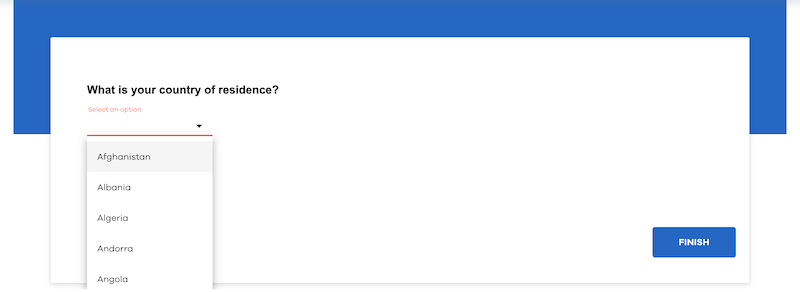12 Survey Question Types and Examples to Get You Results

Surveys are a powerful tool for businesses, researchers, and marketers to understand the opinions and needs of individuals. If you're introducing a new product, measuring the effectiveness of a message, or wanting to collect feedback from your customers, surveys let you hear directly from people about what they like and dislike.
But to produce significant and credible outcomes, you need to ask questions properly, which is why you must know the diverse types of survey questions.
If your question is too general, responses might not be helpful to you; if it is too structured, you might miss important information.
In this guide, we'll discuss the best types of survey questions, along with survey question examples. We'll show you when and how to use each type of question, and offer tips for maintaining your survey.
This guide will be helpful for those who are creating their first survey or looking to enhance their existing survey strategies.
12 types of survey questions with examples
To build an effective survey, it helps first to understand the types of questions and when to use them, as this will allow you to choose the right questions for your goals and respondents.
1. Open-ended questions
Questions where the respondent has to reply in their own words. These allow rich, qualitative responses.
Use these survey question ideas when you require answers in the respondent's words, ideal for exploratory research or gathering opinions.
Example: "What is the biggest challenge you experience when managing your team?"
2. Multiple-choice questions
Respondents select one (or more) of the predetermined answers.
These questions are ideal for standardized, easy-to-analyze data, and can be used for preferences, behavior, or demographics.
Example: "Which of the following tools do you use to run projects?"
- Trello
- Asana
- Monday.com
- Other (please specify)
If you want respondents to select more than one answer, you can use multiple-choice survey questions, where respondents can tick one or many boxes. On Checkbox, this format often includes options like "Other" or "None of the above," and lets you set limits on how many choices can be selected.
For more details, see our Checkbox deep dive, which covers how to craft and personalize these questions to get the best outcomes.
3. Rating scale questions (Likert Scale)
Respondents rate agreement, satisfaction, or frequency on a scale (usually 1 to 5 or 1 to 7). The questions are used to measure sentiment or the strength of opinion.
Example: "How satisfied are you with our customer support?"
- Very dissatisfied
- Dissatisfied
- Neutral
- Satisfied
- Very satisfied
4. Matrix questions
It is a grid of related Likert-style questions. These questions are effective for asking multiple questions regarding a similar subject or comparing attributes.
Example: "How would you rate the following aspects of our customer support?"
5. Dropdown questions
In this case, respondents select one option from a dropdown list. They're ideal when you have a long list of answer choices, such as countries, age ranges, job titles, etc. This type of question helps save space and keeps the survey interface clean.
Example: "What is your country of residence?" [Dropdown list]

6. Ranking questions
Respondents rank the list items by importance or preference. This allows you to understand priorities or relative preferences.
Example: "Rank the following features in order of importance to you (1 = most important):"
- Price
- Ease of use
- Customer support
- Integration options
7. Dichotomous questions (yes/no)
These are questions with two potential answers: Yes or No. You can use them to obtain binary responses rapidly and clearly.
Example: "Have you bought from us in the last 6 months?"
8. Demographic survey questions
These questions help you gather background information on respondents to segment and understand your results.
Age survey question
Example: "What is your age range?"
- Under 18
- 18–24
- 25–34
- 35–44
- 45–54
- 55+
Gender survey question
Example: "What is your gender?"
- Male
- Female
- Non-binary / Third gender
- Prefer not to say
Ethnicity survey question
Example: "How would you describe your ethnicity?"
- White
- Black or African American
- Asian
- Hispanic or Latino
- Native American or Alaska Native
- Other (please specify)
Education-level survey question
Example: "What is the highest degree you have received?"
- Some high school
- High school diploma or equivalent
- Some college
- Bachelor's degree
- Master's degree
- Doctorate or professional degree
9. Net promoter score (NPS) questions
These are standardized survey questions, where the NPS score helps to measure customer loyalty.
Example: "How likely would you recommend our product to a friend or colleague?" (Scale from 0–10)
10. Image choice questions
Respondents choose between visual options (for example, logos, product packaging).
Good for branding, design, or usability testing.
Example: "Which of these logos do you like best?" [Display several image options]
11. Slider questions
Slider questions enable respondents to select a value by moving a slider along a scale, which is convenient when measuring the intensity of feelings or assessments, for example, satisfaction, pain, desire to buy, price, etc. This format provides more precision and flexibility than simply choosing from fixed options.
Example: "On a scale of 0 to 100, how likely are you to renew your subscription?" (The respondent moves the slider from 0, "not at all likely", to 100, "very likely")
12. Survey question ideas for specific topics
In addition to the question format, below are some survey question ideas suitable for various business tasks. These could include Voice of the Customer questions related to customer satisfaction, product evaluation, market research, and so on.
- Customer feedback: "What could we do to improve your experience?"
- Employee engagement: "How valued do you feel in your current role?"
- Brand awareness: "Which of the following brands have you heard of?"
How to maintain ethical standards and integrity with your survey questions
When taking survey data, especially personal or sensitive information, privacy and ethics must be top priorities. It's about respecting your respondents, building trust, and collecting high-quality data.
The following are best practices so that your surveys are ethical and safe.
Ask only for the feedback you really need
It's tempting to gather as much data as you can, just in case, but this is frustrating for respondents and a privacy problem.
Best practice: Ask yourself before including a question: "Do I need this data to fulfill the purpose of this survey?" As an example, if you're not segmented by education level, don't ask an education-level survey question.
Be clear about how the data will be used
Tell respondents why you're collecting data. They should know how their responses will be stored or used. This builds trust and encourages honest and transparent responses.
Add a short disclaimer, such as: "Your responses will remain confidential and will only be used for internal research purposes."
Offer anonymity where possible
Whenever possible, anonymize your surveys. Anonymous surveys lead to more honest responses, especially when discussing sensitive topics (like job satisfaction or health). Don't gather identifiable data (such as email or IP address) unless you require it.
Provide opt-out options for sensitive questions
Some questions (ethnicity, gender, or income) can leave individuals uncomfortable. Always give "Prefer not to say" as a response option, and a notice that these questions are optional.
Example: "What is your annual household income?"
- Less than $25,000
- $25,000–$49,999
- $50,000–$74,999
- $75,000–$99,999
- $100,000 or more
- Prefer not to say [opt-out option]
Protect the data you collect
If your survey takes sensitive data, make sure that respondents' data is being processed securely. Utilize a data security compliant survey tool and applicable privacy laws like HIPAA (Health Insurance Portability and Accountability Act) or GDPR (General Data Protection Regulation).
We also recommend adding a disclaimer to your survey:
"Your answers will be anonymous and kept confidential. Data obtained will be used only for internal research and improvement purposes."
Use a secure and compliant survey platform
Modern survey platforms like Checkbox offer on-premises deployment capabilities that give you complete control over data storage and access. This is especially required in industries that maintain strict compliance standards like healthcare, finance, or government studies.
Benefits of using Checkbox's on-premises platform:
- Total control of security measures
- No unauthorized access to third-party information
- Ideal for confidential or regulated polls
Ethical survey practices protect your respondents and improve the quality and validity of your results.
Checkbox helps you create effective surveys. Request a demo today!
How to choose the right survey questions
Writing a good survey is about asking questions in the right way. The art is in aligning your question types with your research goal, audience, and data type you want to analyze.
Here's how you can select the ideal mix of survey question types for your project:
Decide on your survey objective first
Define what you want to find out before you write a single question. Are you trying to:
- Know customer satisfaction?
- Collect demographic data for segmentation?
- Measure brand awareness?
- Get open-ended feedback on a product or service?
Your goal should determine the question types you choose.
Use a mix of quantitative and qualitative question types
Most effective surveys include a combination of closed and open-ended questions, and qualitative and quantitative questions to gather both quantifiable information and more in-depth details.
Map survey question types to the data you need
Here's when to use each main question type based on what you need:
- Want to segment by demographics? Use multiple-choice or dropdown demographic questions for age, gender, education level, and ethnicity survey questions.
- Measuring customer satisfaction or loyalty? Use Likert scales or NPS questions.
- Prioritizing features or needs? Use ranking questions or matrix tables.
- Testing visual content or marketing assets? Use image choice questions.
- Want honest, unfiltered feedback? Use open-ended questions to let respondents answer in their own words.
Be brief and to the point
Just because you can ask 20 questions doesn't necessarily mean you should. A brief, targeted survey with quality questions tends to get higher response rates and more considered answers.
We recommend placing the most essential questions at the beginning of the survey. More on positioning in the FAQ section later.
Customize to the audience
A survey for higher business decision-makers will be different from a survey for university students. If you're designing a market research survey or collecting internal feedback, customize your survey question types, language, and tone to fit your audience's environment and expectations.
Be aware of the survey medium
Pay attention to how and where your survey is being taken:
- On mobile? Ask fewer ranking or matrix questions that need space.
- In-person? Ask more open-ended questions to get qualitative data.
- Via email? Keep it concise to avoid drop-offs.
The best surveys aren't built with a single survey question type alone; they're built with purpose. Combine formats, match your questions to your goals, prioritizing clarity and relevance.
What are the differences between surveys and questionnaires
The terms survey and questionnaire are often used like synonyms, but they actually refer to two different things. Understanding the distinction is essential when planning your data collection strategy.
Surveys are complete research tools. A good survey includes a clear plan of whom to reach, how to reach the respondents (by email, web, or phone), and how to analyze and act on the results.
Questionnaires represent a part of a survey, but they're only one piece of the puzzle. They don't have the framework of a complete survey, and the data collected can lack context or direction.
So, if you're looking to research your market, iterate on a product, or educate leadership on customer trends, you're almost always creating a survey, not just a questionnaire.
Other data collection methods to use alongside surveys
Surveys are a Swiss army knife, but they're not the only tool in your belt – combining surveys with other research methods can allow you to view the entire landscape. Here are a few common complementary methods:
Interviews
In-depth, one-on-one conversations that allow for more probing of opinions, behavior, or needs. You can use them after a survey to explore "why" behind responses.
Example: Hold interviews to follow up with particular survey respondents who gave surprising or confusing answers.
Focus groups or research panels
Small groups of participants are brought together to discuss a topic in detail. Use this method when you want to observe interactions or get opinions in a group context.
Example: Following a set of market research survey questions about brand perception, you might hold a panel to explore how people interpret your brand messaging or visuals in more depth.
Product and attribution data analysis
This method is the best for examining user behavior, clickstream data, sales performance, or product usage analytics. Use the analysis to compare against or validate survey results.
Example: If a survey finds customers use a feature "frequently," validate that by examining product analytics.
Observational research
Watching what people do in naturalistic environments (in-store, on a website, etc.). Use this research to supplement survey data with actual behavior.
Blending these four methods with your surveys can:
- Confirm trends in your survey data
- Uncover insights that surveys can't on their own
- Increase the validity of your findings
Final thoughts
Writing a great survey isn't so hard; it's about intention, simplicity, and knowing your people. Every well-thought-out survey question brings you closer to real insight.
If you're organizing your next survey, put what you actually need to know first, choose question types and survey question examples that will take you there, avoid wasting your respondents' time, and respect their privacy.
And once the responses are in, that's where the real value begins. You can use your findings to improve products or services, job environment, drive maximum customer experience, and inform better business decisions.
Want to make answers matter? Start building better surveys with Checkbox, a powerful, no-code survey platform for collecting feedback, analyzing results, and improving customer and employee experiences. Request a demo!
Survey question FAQs

Define the goal of your survey, and choose a question type that fits your goal. Keep your wording simple and neutral. Each question should focus on collecting one specific piece of information that helps answer your main research question.

Place the most important question in the early part of the survey, at the start of the first two to three questions – with this tactic, you'll capture high-quality responses before survey fatigue sets in.

The best question for a survey is precise, clear, and neutral. It aligns with your research goal, is easy for respondents to understand, and offers suitable answer choices. When creating questions, always respect your respondents' time and privacy.


